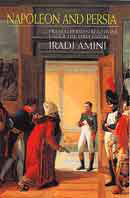Safavid Iran and Her Neighbors الإنجليزية 1435
Safavid Iran and Her Neighbors
22٫69 $
مشاركة
Wishlist
ISBN رقم:
9781607812517
الناشر:
The University of Utah press
الفئة العمرية:
البالغون
الصفحات:
210
الوزن:
310 g
أبعاد المنتج:
15 x 23 x 1٫47 cm
غلاف الكتاب:
ملف ورقی
The Safavid dynasty (1501-1722) originated in one of the many Turkish, possibly Kurdish, dervish orders begun shortly after the Mongol invasion. Its founder, Isma'il, took advantage of the chaotic political situation at the end of the fifteenth century to establish control over the territory that comprises most of current-day Iran. Safavid rulers established Shi'ism as the dominant ideology, the Muslim faith still observed by the majority of Iranians. Safavid Iran and Her Neighbors, which focuses primarily on Persian external relations during this period, includes wide-ranging contributions that cover dervish orders, the Central Asian hajj, developments in Shi'i legal theory, cultural relations between Persia and Mughal India, and diplomatic relations between Iran, Russia, and Ottoman Turkey.
more
The Safavid dynasty (1501-1722) originated in one of the many Turkish, possibly Kurdish, dervish orders begun shortly after the Mongol invasion. Its founder, Isma\'il, took advantage of the chaotic political situation at the end of the fifteenth century to establish control over the territory that comprises most of current-day Iran. Safavid rulers established Shi\'ism as the dominant ideology, the Muslim faith still observed by the majority of Iranians. Safavid Iran and Her Neighbors, which focuses primarily on Persian external relations during this period, includes wide-ranging contributions that cover dervish orders, the Central Asian hajj, developments in Shi\'i legal theory, cultural relations between Persia and Mughal India, and diplomatic relations between Iran, Russia, and Ottoman Turkey.
more






